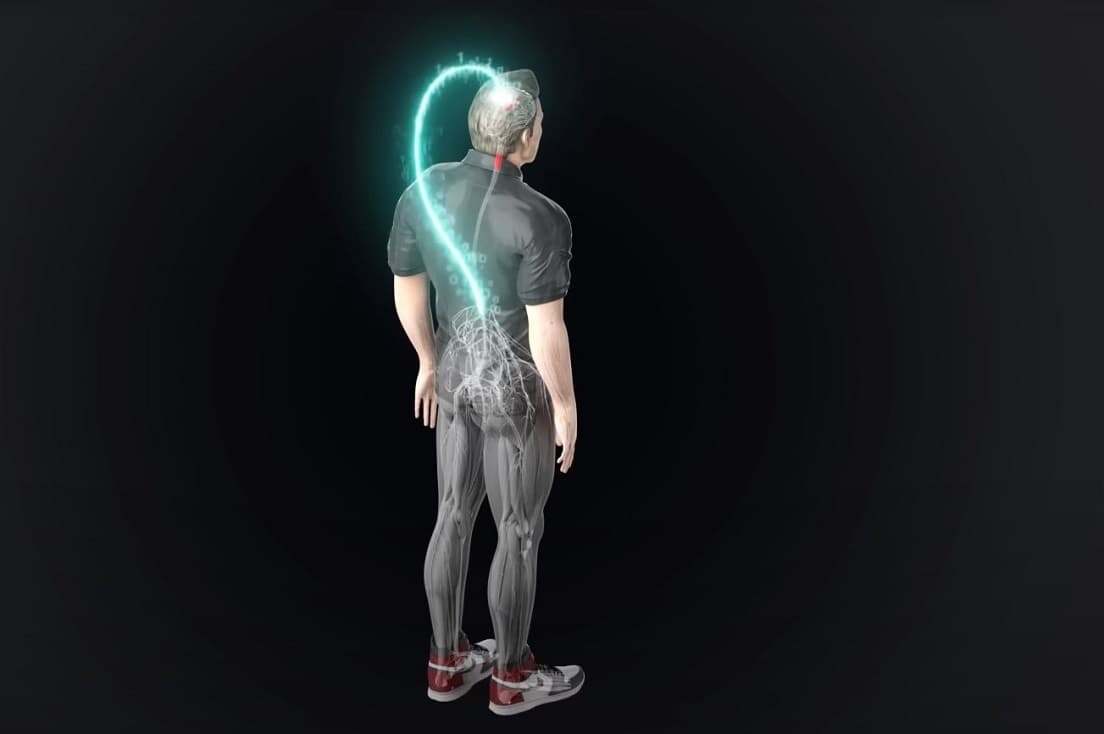Neuroscientists’ Brain Implants Reverse Spinal Cord Injury

A screen shot from animation depicting how implants used brainwaves to help a paralyzed man walk again. Image courtesy of The Guardian.
A team of neuroscientists in Switzerland helped a paralyzed man stand and walk again by implanting a device that connects brain waves to muscles, according to an article in The Guardian. This pioneering research has the potential to help other paralyzed people as well as stroke patients.
Forty-year-old Gert-Jan Oskam was paralyzed in a cycling accident in 2011 and told he would never walk again. Prof. Jocelyne Bloch, a neurosurgeon, implanted electrodes on Oskam’s brain to detect neural activity when he tried to move his legs. The digital bridge sent pulses to activate nerves in the spine, which switched on muscles to produce the desired movement. In essence, the system captured the thoughts of the patient, and stimulated the spinal cord to reestablish movement.
While the resulting steps were neither swift nor smooth, the movements were natural, noted the researchers. Oskam was able to flex his hip, knee, and ankle, and walk more than 100 meters at a time. He also could climb stairs. After 40+ training sessions, he was able to regain some control over his legs even when the device was switched off. In that way, the digital bridge device offers promise for regenerating spinal nerves, with even more progress anticipated from patients with more recent injuries. While the work is still in the early stages, researchers hope the device will help many more patients with paralyzing injuries to walk and move again.
Not every patient can recover from spinal cord injury. Getting funds for special needs and care can make all the difference between a life of hardship or one of support. Tom Duffy has been a member of the board of Magee Rehabilitation Foundation for over 20 years. He is keenly aware of developments in spinal cord care and has obtained 8-figure verdicts for people who have suffered spinal cord injuries in Philadelphia.
Please contact us if you would like to discuss the details of your case.

